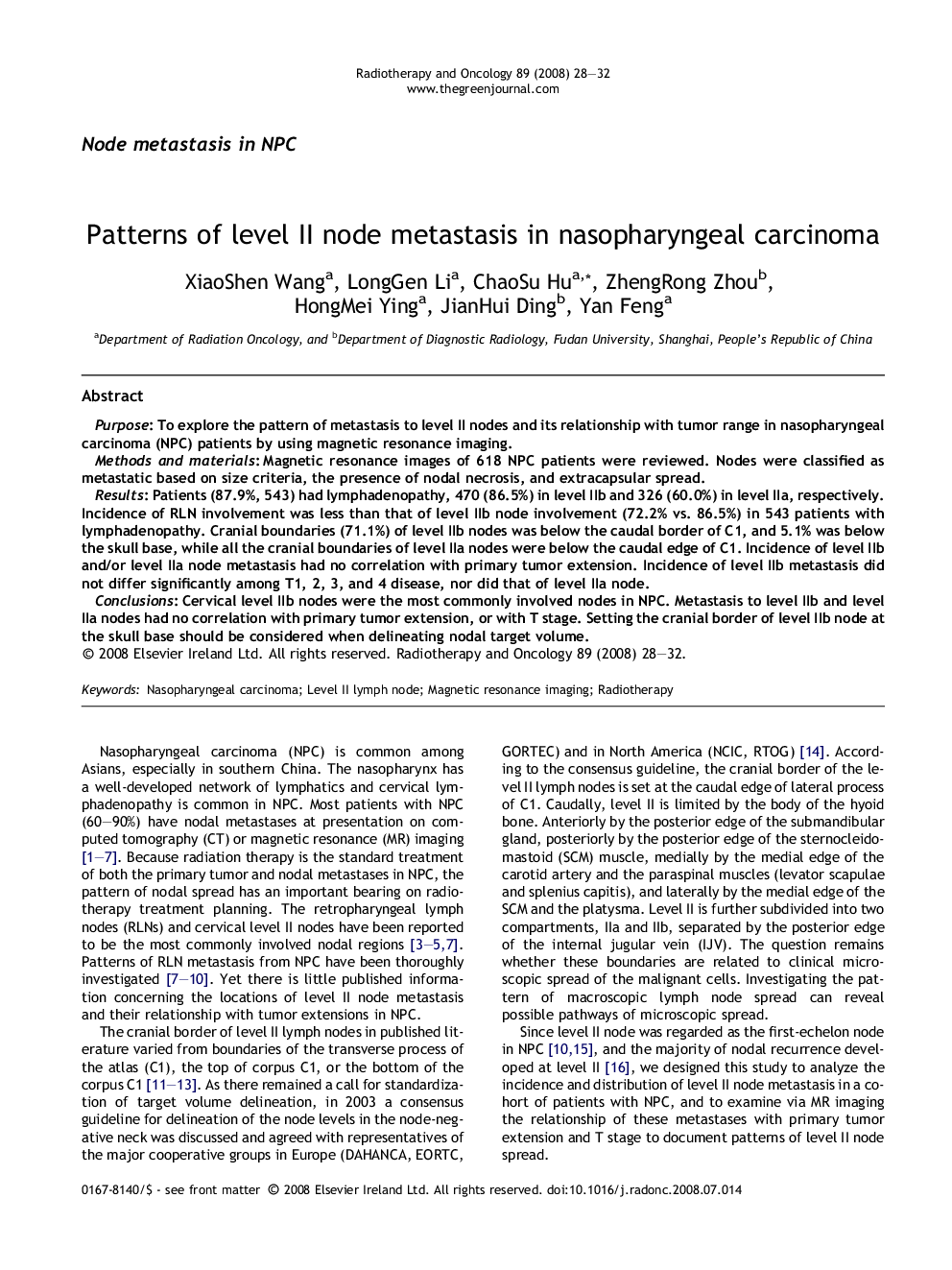| Article ID | Journal | Published Year | Pages | File Type |
|---|---|---|---|---|
| 2160296 | Radiotherapy and Oncology | 2008 | 5 Pages |
PurposeTo explore the pattern of metastasis to level II nodes and its relationship with tumor range in nasopharyngeal carcinoma (NPC) patients by using magnetic resonance imaging.Methods and materialsMagnetic resonance images of 618 NPC patients were reviewed. Nodes were classified as metastatic based on size criteria, the presence of nodal necrosis, and extracapsular spread.ResultsPatients (87.9%, 543) had lymphadenopathy, 470 (86.5%) in level IIb and 326 (60.0%) in level IIa, respectively. Incidence of RLN involvement was less than that of level IIb node involvement (72.2% vs. 86.5%) in 543 patients with lymphadenopathy. Cranial boundaries (71.1%) of level IIb nodes was below the caudal border of C1, and 5.1% was below the skull base, while all the cranial boundaries of level IIa nodes were below the caudal edge of C1. Incidence of level IIb and/or level IIa node metastasis had no correlation with primary tumor extension. Incidence of level IIb metastasis did not differ significantly among T1, 2, 3, and 4 disease, nor did that of level IIa node.ConclusionsCervical level IIb nodes were the most commonly involved nodes in NPC. Metastasis to level IIb and level IIa nodes had no correlation with primary tumor extension, or with T stage. Setting the cranial border of level IIb node at the skull base should be considered when delineating nodal target volume.
